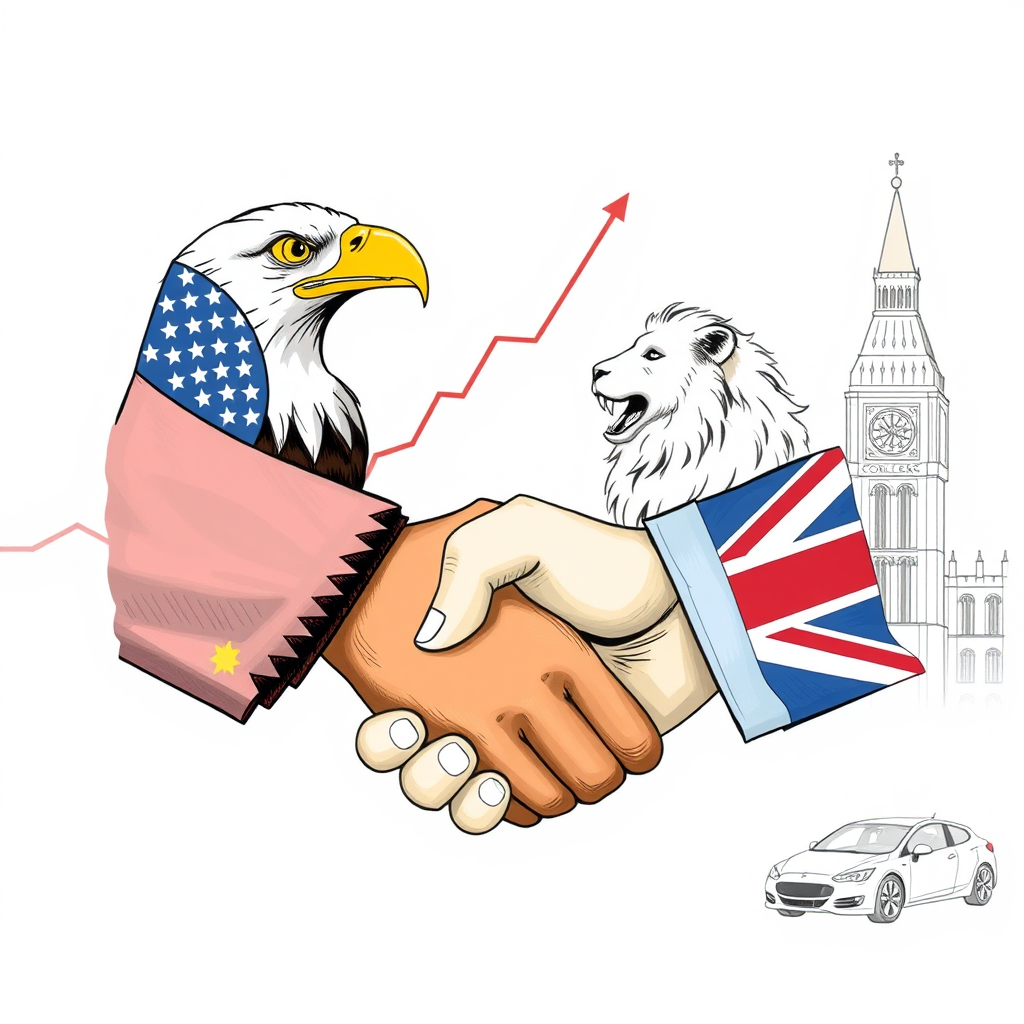Trump Announces U.S.-U.K. Trade Deal: Details

A new trade agreement between the United States and the United Kingdom is poised to be announced, with former President Donald Trump hailing it as “full and comprehensive.” Trump announced the deal Thursday via his social media platform, emphasizing the longstanding relationship between the two nations. While details remain forthcoming, a press conference is scheduled at the Oval Office to unveil the agreement, though it’s unclear if any documents will be signed immediately.
The announcement spurred positive market reactions, with Wall Street opening higher. This agreement arrives after a period of trade tensions, including a 10% tariff imposed by Trump on U.K. goods earlier this year, part of a broader series of “reciprocal tariffs.” While those tariffs were paused for the U.K., significant duties remain on steel, aluminum, cars, and car parts. U.K. businesses, particularly in the automotive sector, are hopeful the new agreement will alleviate these burdens.
Sources within the British government indicate a “heads of terms agreement” has been reached, but a finalized deal is still under negotiation. U.K. Prime Minister Sir Keir Starmer addressed the matter, assuring a focus on national interests and worker security. His office confirmed a “calm and pragmatic” approach to the talks.
Lawmakers on both sides of the aisle have voiced concerns and expectations. Questions have been raised regarding the protection of U.K. agricultural standards and the potential impact on farmers. Farming Secretary Steve Reed assured safeguards are in place to prevent undercutting on environmental and welfare standards.
U.K. Chancellor Rachel Reeves expressed optimism, highlighting the strong trade and investment ties between the two countries, and downplayed any potential conflict with ongoing negotiations with the European Union. Bank of England Governor Andrew Bailey welcomed the agreement, praising both U.K. and U.S. negotiators. However, economist Jonathan Haskel cautioned against overstating the agreement’s scope, differentiating between limited “trade deals” and broader, long-term “trade agreements.”
The relationship between Trump and Starmer has evolved considerably. Initially marked by strong criticism from Starmer regarding Trump’s policies and rhetoric, particularly concerning immigration and human rights, the two leaders appear to have established a working rapport since Trump’s return to the presidency. A February meeting in the Oval Office, including the delivery of a letter from King Charles III inviting Trump for a state visit, signaled a positive shift. However, lingering tensions remain, as evidenced by accusations of foreign interference during the 2024 U.S. presidential election and Trump’s criticism of Starmer’s handling of the war in Ukraine.
This agreement, while seemingly positive on the surface, warrants careful scrutiny. The history of trade negotiations demonstrates that initial announcements often mask complex details and potential drawbacks. The focus on a “full and comprehensive” agreement should be tempered with a realistic assessment of its actual scope and impact, particularly regarding the protection of U.K. industries and standards. The evolution of the U.S.-U.K. relationship under Trump and Starmer also suggests a pragmatic, albeit potentially fragile, alliance built on mutual interests rather than shared values. The long-term success of this agreement will depend on a commitment to transparency, equitable terms, and a willingness to address concerns from all stakeholders.